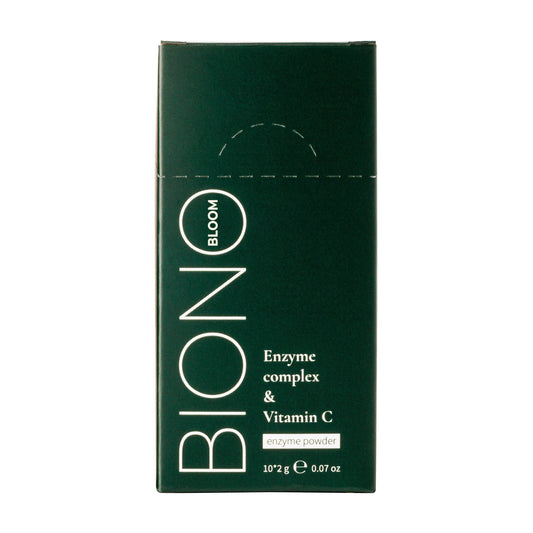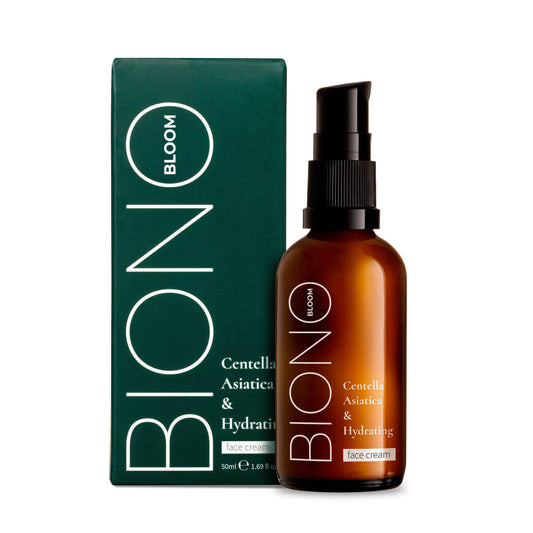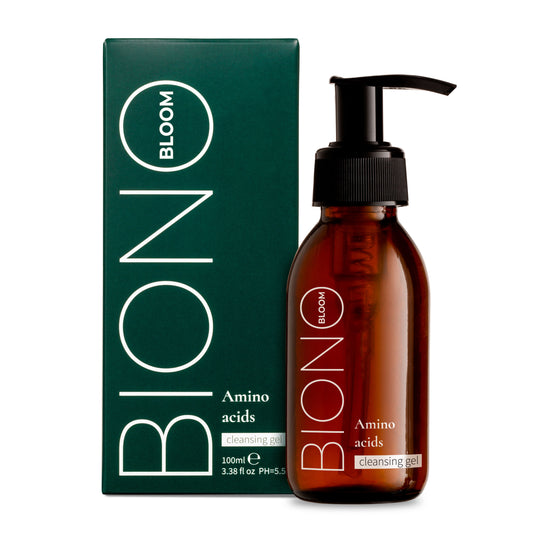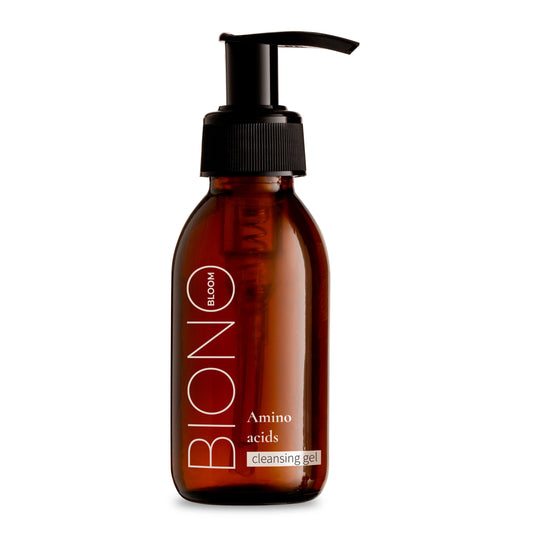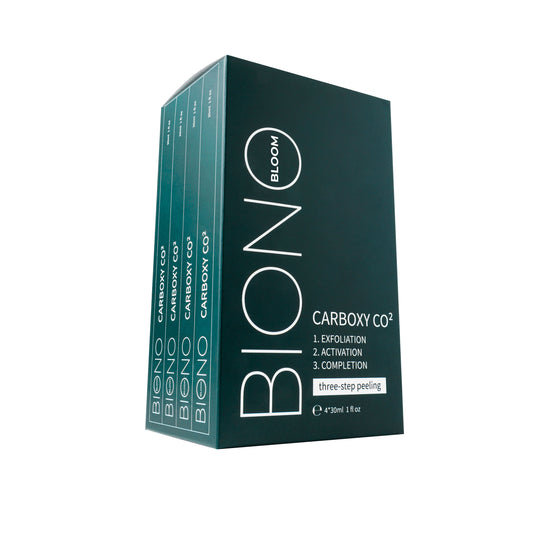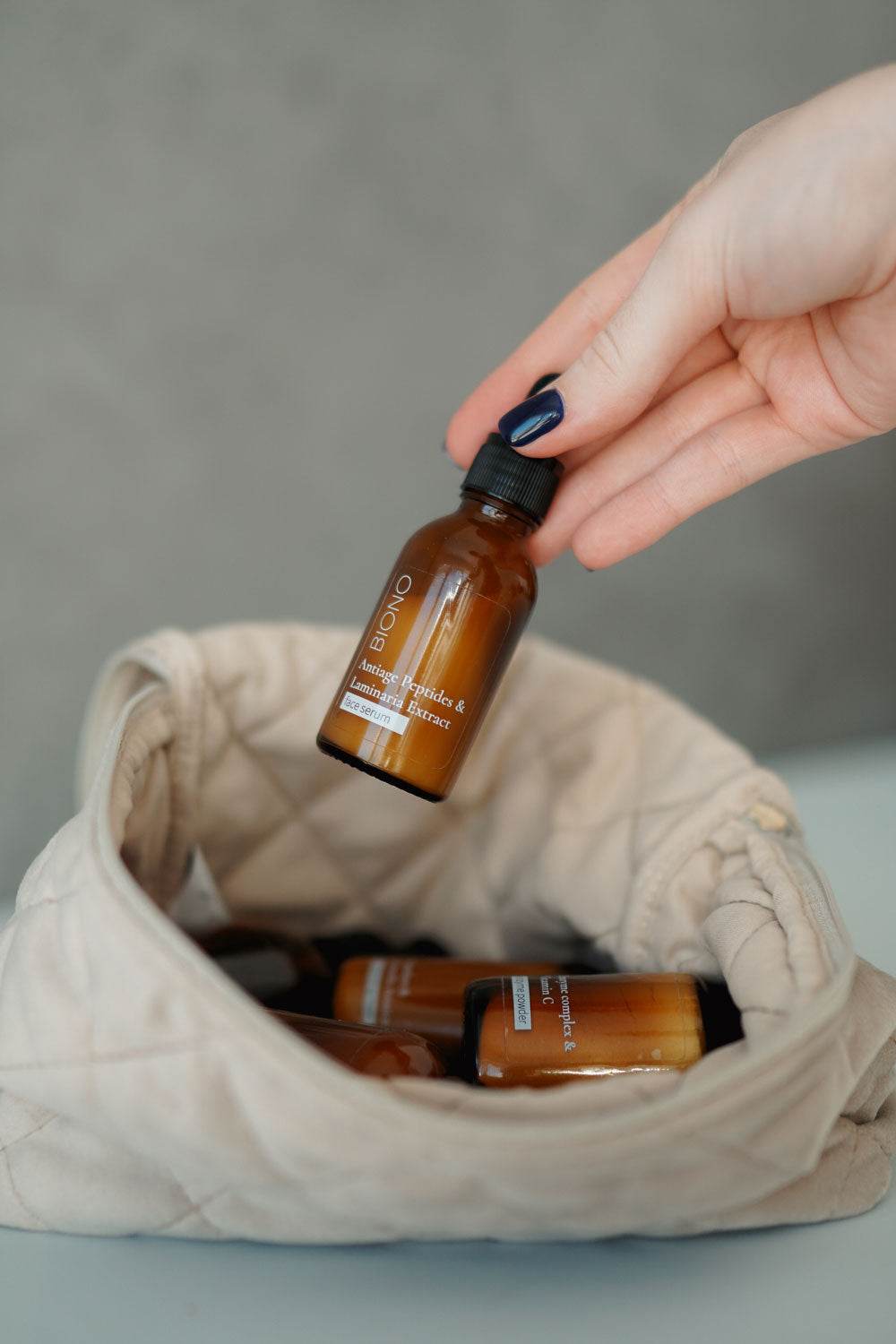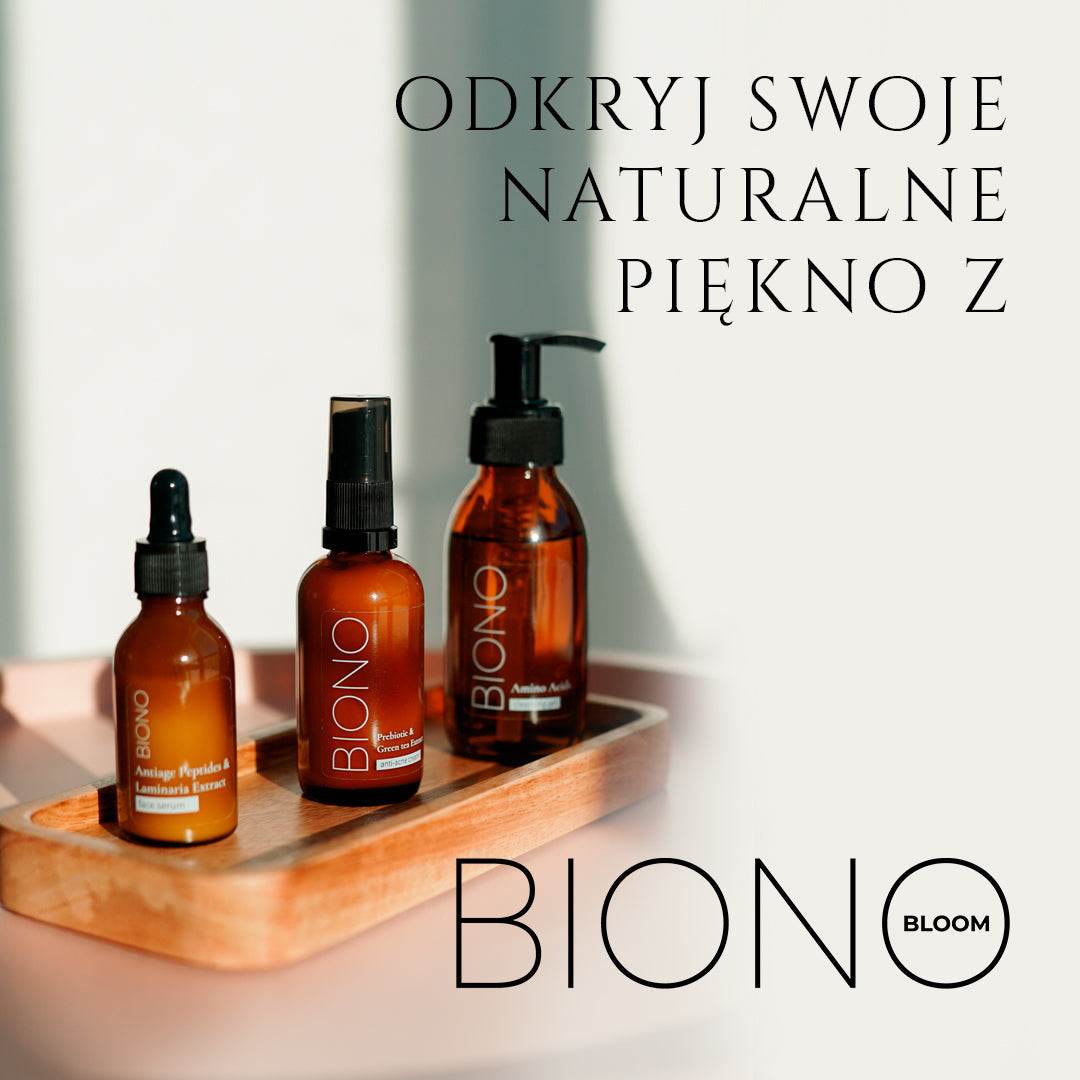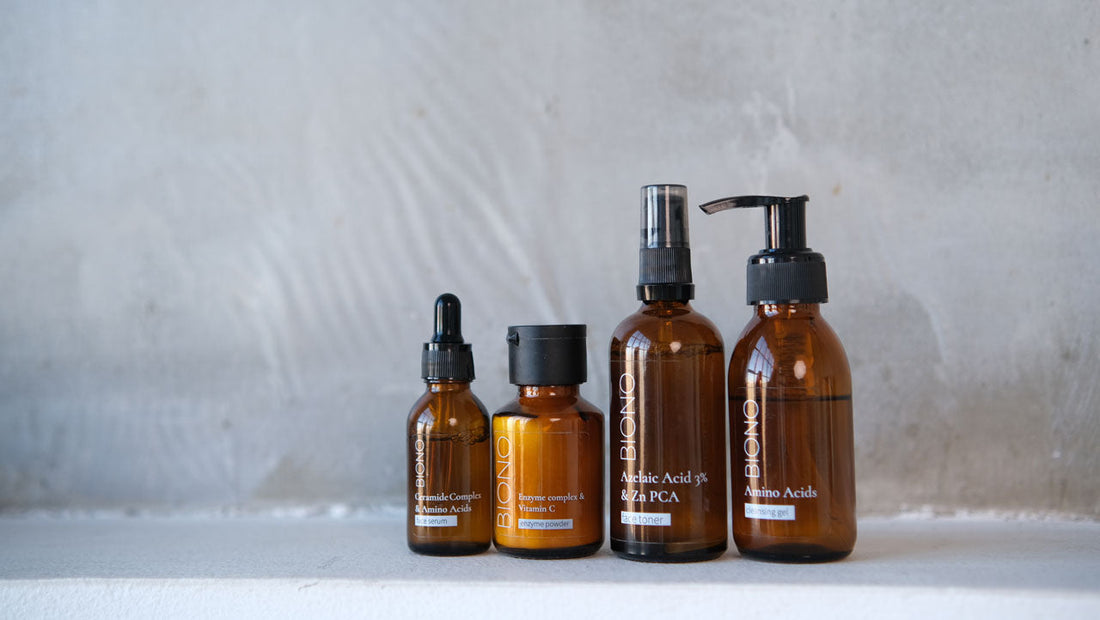
Facial Care After 40 – A Comprehensive Guide for Mature Skin
Share
After the age of 40, skin undergoes significant hormonal and structural changes that require adjustments to your skincare routine. Collagen and elastin production decreases, cell regeneration slows, and skin becomes more sensitive to external factors. In this article, you'll discover proven methods and professional advice to help maintain youthful, supple, and healthy skin after 40.
Skin care after 40 – what changes in mature skin?
After the age of forty, skin undergoes natural aging processes that are visible to the naked eye. Estrogen levels decline, which directly impacts epidermal thickness, hydration, and elasticity. Collagen production decreases by approximately 1% per year, leading to loss of firmness and wrinkle formation. Hyaluronic acid synthesis also declines, causing the skin to lose its ability to retain moisture and become drier.
Visible signs of aging include not only expression lines around the eyes and mouth, but also a loss of facial contour, discoloration, and dilated blood vessels. The skin becomes thinner, more sensitive, and more susceptible to mechanical damage. The process of cellular regeneration, which in our youth lasted approximately 28 days, can now extend to as long as 45-60 days. These changes require a completely new approach to skincare and cosmetic selection.

Key ingredients for facial care after 40
Retinoids, derivatives of vitamin A, are the gold standard in combating the signs of aging. They stimulate collagen production, accelerate cell renewal, and smooth wrinkles. For skin over 40, retinol at a concentration of 0.3-1% works best, or gentler forms like retinal or bakuchiol for sensitive skin. Introduce retinoids gradually, starting with two applications per week to avoid irritation. Always use them in the evening and apply a high SPF in the morning, as they increase skin's photosensitivity.
Peptides are small protein molecules that act as signals to the skin, instructing it to produce collagen and elastin. Matrixyl, Argireline, and copper peptides are ingredients that have a real impact on firmness and wrinkle reduction. Unlike retinoids, peptides are gentle and can also be used in the morning. They work best in serums or creams with a light consistency that allow for deep penetration. Skincare for women over 40 should definitely include at least one product with peptides.
Hyaluronic acid of varying molecular weights is the absolute foundation for hydrating mature skin. Low-molecular-weight hyaluronic acid penetrates deeply and fills wrinkles from within, while high-molecular-weight hyaluronic acid creates a moisture-retaining film on the surface. Ceramides rebuild the lipid barrier, which naturally weakens with age, protecting against water loss and irritants. Niacinamide (vitamin B3) at a concentration of 5-10% brightens discolorations, strengthens the skin barrier, and regulates sebum production.
Daily skincare routine for mature skin
Your morning facial routine after 40 should begin with a gentle cleanse with micellar water or a mild gel. Avoid harsh soaps and detergents, which can further dry out your skin. After cleansing, apply a moisturizing toner with hyaluronic acid or a strengthening essence to prepare your skin for subsequent products. Then, apply a vitamin C serum (10-20% L-ascorbic acid), which protects against free radicals and brightens discolorations.
After the serum, it's time for eye cream – use a special product with caffeine, peptides, and vitamin K, which reduce dark circles, puffiness, and fine lines. The eye area is the most delicate part of the face and requires special attention. Then, apply a moisturizer with at least SPF 50 – this is the most important step in preventing premature aging. Even on cloudy days, UVA radiation penetrates clouds and accelerates photoaging.
Evening skincare routine after 40:
- Step 1: Remove makeup with oil or balm, then thoroughly cleanse with gel or milk.
- Step 2: Toning with hydrolate or alcohol-free tonic
- Step 3: Serum with retinoids or peptides (use alternately, do not combine these ingredients)
- Step 4: Eye cream with retinol or peptides
- Step 5: Rich regenerating cream or night oil (rosehip oil, argan oil, jojoba oil)

Professional treatments to support home care
Needle mesotherapy is a treatment that introduces active substances into the skin through microinjections. For skin over forty, cocktails containing hyaluronic acid, vitamins, amino acids, and peptides are used. A series of 4-6 treatments every 2-3 weeks can significantly improve skin firmness, hydration, and tone. The effects last 6-12 months, and the treatment can be repeated regularly as part of an anti-aging regimen.
Professional acid peels are much stronger than home-made acid-based cosmetics. A dermatologist may use 50-70% glycolic acid, pyruvic acid, or TCA, which stimulate deep skin renewal. After the treatment, some peeling may occur for a few days, but the results include visible smoothing, reduced wrinkles and discoloration, and improved texture. Peels are performed in series in autumn and winter, when the sun is less intense.
Microneedling (dermaroller or dermapen) is a procedure that creates micro-injuries in the skin, stimulating natural healing processes and collagen production. After the treatment, the skin absorbs active ingredients better, so it's often combined with the application of a serum containing peptides or growth factors. Facial care after 40 significantly benefits from combining in-office treatments with a daily at-home routine – this guarantees the best results.
Natural methods to support skin regeneration
Kobido or gua sha facial massage are techniques derived from oriental medicine that stimulate circulation, improve lymphatic drainage, and tighten the skin. A daily 5-10-minute massage with a gua sha tool made of rose quartz or jade with oil can work wonders – reducing puffiness, smoothing wrinkles, and improving facial contours. Movement should always be directed from the center of the face outward and from the bottom up, following the massage lines.
Collagen supplementation from within supports skin processes. Hydrolyzed collagen type I and III powder (minimum 5-10g daily) improves elasticity, hydration, and reduces wrinkle depth. Results are visible after approximately 8-12 weeks of regular use. Additionally, it's worth supplementing with vitamin C, which is essential for collagen synthesis, as well as hyaluronic acid, organic silicon, and biotin.
Skincare after 40 must also take into account lifestyle. Sleep is the most intense time for regeneration – aim for at least 7-8 hours on a silk pillowcase, which reduces friction and prevents wrinkles. Reducing stress through meditation, yoga, or regular exercise affects cortisol levels, which, when excessive, accelerate aging. Avoid cigarettes and alcohol – these are among the main factors that destroy collagen and elastin.
Anti-aging diet for beautiful skin
High-quality protein is the foundation for building collagen. Include lean meat, fish, eggs, legumes, and dairy products in your diet daily. Oily fish like salmon, mackerel, and sardines are particularly valuable, as they are rich in omega-3 fatty acids, which reduce inflammation and support the skin's lipid barrier. Gelatin and bone broth contain natural collagen and amino acids that support skin regeneration from within.
Antioxidants protect cells from oxidative stress and slow the aging process. Include plenty of colorful vegetables and fruits in your diet—blueberries, blackcurrants, lingonberries, pomegranates, red peppers, tomatoes, and carrots. Dark green leafy vegetables like spinach and kale provide lutein and zeaxanthin, which protect the skin. Nuts, almonds, pumpkin seeds, and avocados are rich in vitamin E, which works synergistically with vitamin C.
Key nutrients for skin after 40:
- Collagen and gelatin – bone broth, jelly, fruit gelatin (natural)
- Omega-3 – salmon, mackerel, sardines, walnuts, flaxseed
- Antioxidants – blueberries, pomegranate, green tea, cocoa, turmeric
- Vitamin C – peppers, broccoli, citrus fruits, kiwi, strawberries
- Biotin and zinc – eggs, nuts, seeds, liver, oysters
- Phytoestrogens – flax seeds, soy, chickpeas (support during menopause)

Common mistakes in mature skin care
Over-cleansing is one of the cardinal sins in facial care after 40. Using harsh gels, washing your face too often with hot water, and using strong mechanical exfoliators damage the natural lipid barrier. Mature skin is delicate and requires gentleness – a gentle cleanse in the morning and evening with lukewarm water and a mild SLS-free product is sufficient. Forget bar soaps and alcohol-based toners, which dramatically dry out the skin.
Skipping SPF is the fastest way to deepen wrinkles and discoloration. UVA radiation penetrates through windows and clouds, acting year-round. Even the best retinoid serum won't be effective if you don't apply SPF 50 in the morning. Photoaging is the leading cause of premature aging—it accounts for 80% of visible signs of aging. Sunscreen should be the last step in your morning skincare routine, applied in the appropriate amount (about 1/4 teaspoon to the face).
Combining too many active ingredients at once can lead to irritation and the opposite of the intended effect. Don't combine retinol with AHA/BHA acids in the same evening – use them alternately. Apply vitamin C in the morning and retinoids in the evening. Skincare for people over 40 should be well-thought-out and consistent, but not excessive. It's better to use fewer products regularly and in the right order than to apply 10 products haphazardly.
When to consult a dermatologist
A dermatologist should be your first port of call when you notice sudden changes in your skin's appearance. If your current skincare routine has stopped working, or if you've developed extensive discoloration, persistent redness, or vascular changes, it's time to see a specialist. A dermatologist will diagnose your skin type, assess its condition, and propose a personalized treatment plan. This may include dermatological therapy with prescription medications, which are significantly stronger than over-the-counter cosmetics.
Conditions that require immediate consultation include any lesions suspected of being cancerous – asymmetric, irregular, or changing color or size. After the age of 40, the risk of skin cancer increases, so regular dermatoscopic examinations should be standard. A dermatologist will also assess for dermatological conditions such as rosacea, seborrheic dermatitis, or psoriasis, which require specialized treatment.
Planning aesthetic medicine treatments also requires consultation with a specialist. Fillers, Botox, thread lifts, and fractional lasers are all treatments that, in experienced hands, produce spectacular results, but must be tailored to individual needs. A good dermatologist won't recommend aggressive interventions, but rather subtle enhancements that enhance a natural appearance. Facial care after forty can be supported by aesthetic medicine, but it should never replace a daily routine.
Summary – a holistic approach to care after 40
Effective facial care after 40 is a combination of carefully selected cosmetics, professional treatments, a healthy diet, and a healthy lifestyle. The key to success is consistency—even the best serum won't work if used irregularly. Introduce changes gradually, observe your skin's reactions, and adapt your routine to its current needs. Remember that skin after 40 requires more attention, time, and the right active ingredients than ever before.
Don't forget that beauty after forty isn't just about youthful appearance, but above all, healthy, well-groomed, and radiant skin. Accept the natural aging process, but do everything you can to slow it down and mitigate its effects. Invest in high-quality cosmetics with proven ingredients, protect your skin from the sun, eat healthily, get enough sleep, and reduce stress. The combination of all these elements will yield results that will be noticeable not only to you but also to those around you – skin will be firmer, more moisturized, and radiant at any age.


